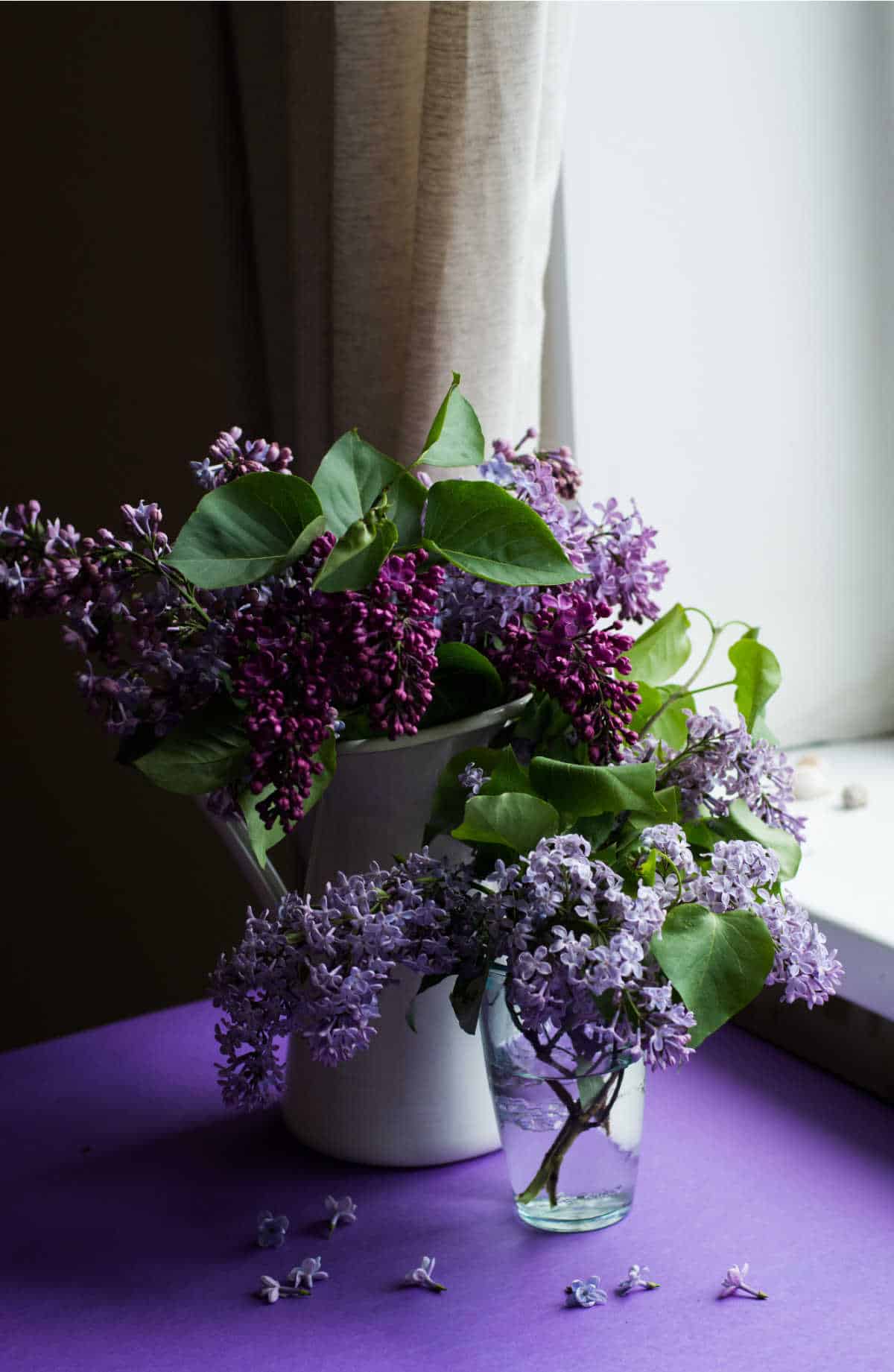I’m lucky that my lilacs are blooming, but “why aren’t my lilacs blooming?” is something many people ask. Lilacs, with their beautiful, fragrant purple flowers, are an old-fashioned favorite. I never had enough sunlight in my Long Island garden to grow them, but here in Virginia I planted several young lilacs from the Audubon Society, and received several transplants as gifts from my friend Joan. And I am pleased to say that two of these shrubs are blooming.
Why Aren’t My Lilacs Blooming
First, patience is the key to lilac blooms. It takes the plants several years to mature to the point at which they produce flowers. Transplanting them, overly vigorous pruning, and young plants are often the cause of poor or non-existent blooms.

There are other reasons why your lilacs may not be blooming this year.
Not Enough Light (Too Shady)
Another major stumbling block to beautiful lilac flowers is too much shade. Many people assume that all shrubs require shade or can thrive in semi-shade, but that’s not so. Lilacs like sunlight and prefer full sunlight.
The lilac you see pictured here faces east, but receives a few hours of southern afternoon sunlight. The second lilac in my garden that is blooming faces south, but is planted on a slope, so that it too receives about six hours of sunlight per day and the rest of the time it is in dappled shade. If your lilacs are planted in dense shade and you can move them into a sunnier spot, consider transplanting them.
Over-Pruning or Pruning at the Wrong Time of Year
Lilacs should not be pruned until they are around five years old or older. Wait until your lilac bush has had a few years to grow before pruning it back.
The right time to prune lilacs is immediately after they bloom. This ensures that you do not accidentally cut off the flower buds for next year. If your lilac didn’t bloom, did you prune it last fall? If so, then you mistakenly pruned off the flowers. Next year, if you prune it at the right time, it may bloom again for you.
Use the Right Fertilizer
Lastly, lilacs do not like overly acidic soil. One trick to encouraging them to bloom is fertilizing them with Epsom salts during the dormant period.
Epsom salts aren’t actually salt. They are crystals of magnesium sulfate and are used as a garden amendment, providing valuable micronutrients to your plants. I always add them around each plant when I plant tomatoes and sprinkle some around my lilac bushes each winter.
Lilacs are dormant in the late fall to late winter. Epsom salts are a good natural fertilizer for lilacs and tomatoes. Add about one cup of Epsom salts to the soil around the drip line of the plant. The drip line is an imaginary line drawn around a plant, picturing where the water would drip from the extended tips of the farthest leaves. Sprinkle the salts (don’t clump them or dump them in a big pile) and work them into the soil a little bit with a rake.
More Great Gardening Articles
If you enjoyed this article, you may also enjoy:
- Bloomerang Lilacs and Old Fashioned Lilacs
- Flowering Trees for Your Front Yard
- Small Front Yard Landscaping Ideas in Pictures





I think my lilac must be getting too much shade. I love lilacs, but I think I’ll have to try planting them somewhere else because I don’t think mine has bloomed once!
I love lilacs! I wish I could grow them here… Thanks for sharing at the #HomeMattersParty – we hope to see you again next week. 🙂
~Lorelai
Life With Lorelai
Great tips!! I have mine in a pot, but want to plant them in the ground so they’ll spread. Wasn’t sure about the sun…thank you for the answer! #HomeMattersParty
I love lilacs! Thanks for sharing #HomeMattersParty
Thanks for the tip about Epsom Salt! Lilacs are my number one favorite flower. I love to cut blooms to put around the house. The smell is wonderful! #HomeMattersParty
Thanks for the tip, I had read about Epsom salt for gardening but wasn’t too sure how to use it. Going to add to my tomatoes plants this weekend. #HomeMattersParty
I have 3 old lilac bushes at my old house that I want at my new house they are over 45 yrs old and are the most amazing smelling flowers ever but I was told I couldn’t transplant them. This article states you can transplant lilac bushes. How would I do that?
We transplant lilacs all the time without a problem. If you really don’t want to risk losing them, leave them. Otherwise in early spring, simply dig them up, move them to your new location. Dig a hole at the new site. Make sure it’s sunny and amend the soil prior to planting. WAter them well until they start growing. That’s about it. Good luck!